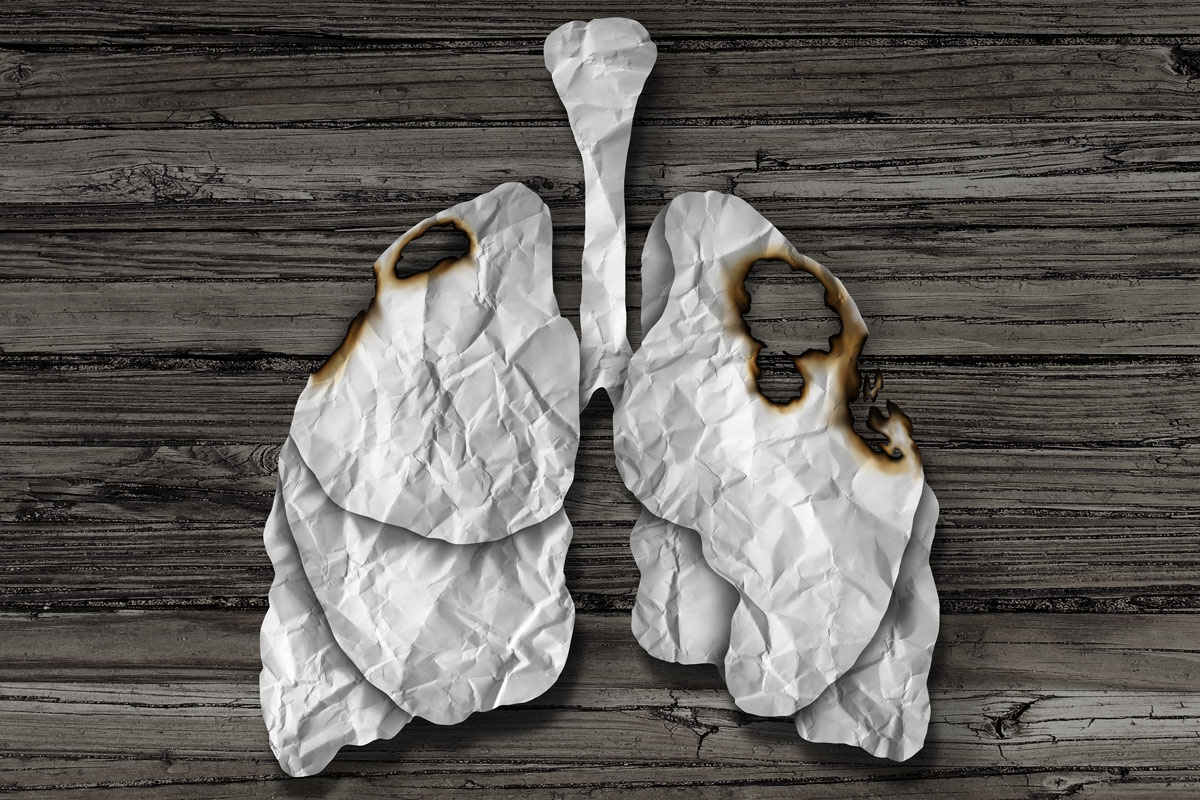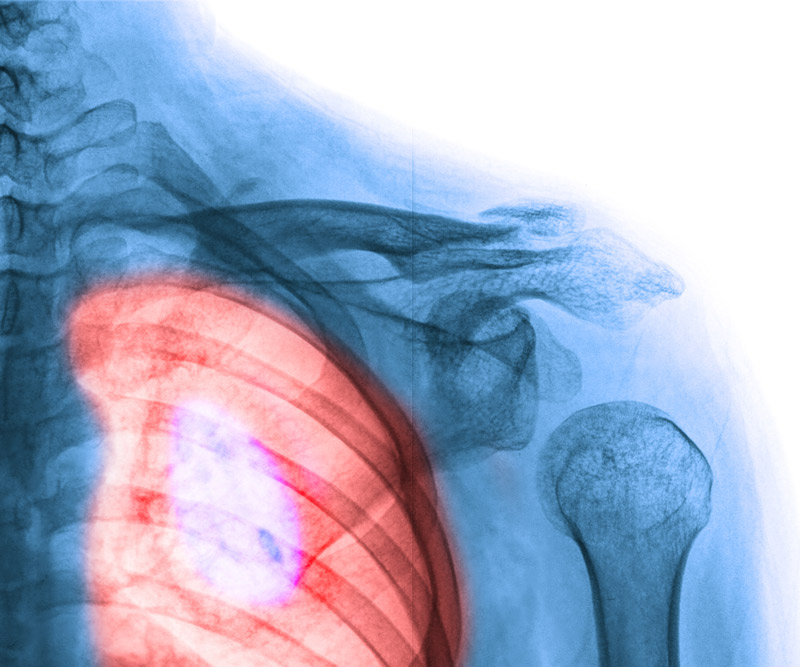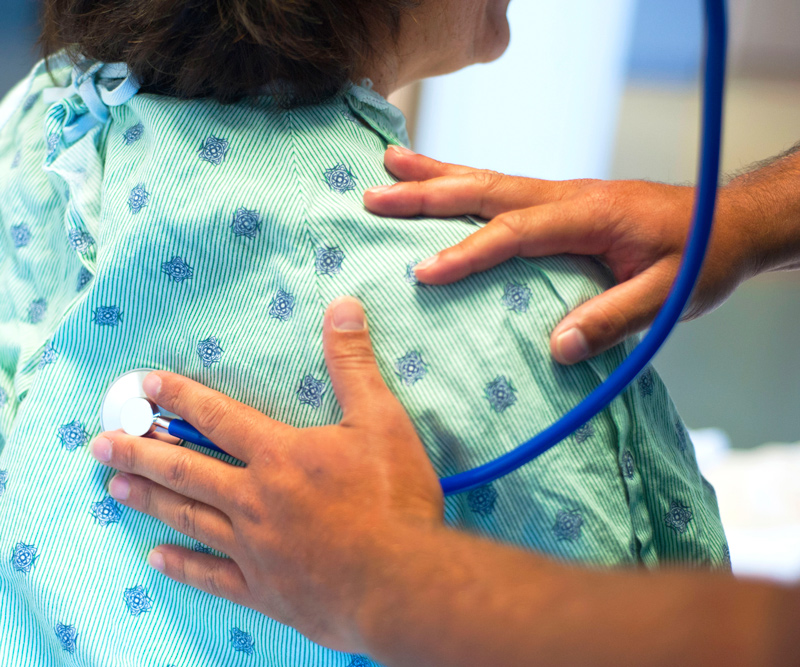
Don't Let Your Lung Health Go Up in Smoke
Lung cancer is the leading cancer killer in both men and women, each year causing more deaths than colorectal, breast and prostate cancers combined.
No ifs, ands or "butts" about it, the main risk factor for developing lung cancer: Smoking.
Compared to those who have never smoked, men who smoke are 23 times more likely to develop lung cancer, while women are 13 times more likely to be diagnosed with this deadly disease.
The good news is that smoking numbers are on the decline.
The bad news? The incidences of lung cancer continue to rise, which shows we've still got a long way to go until we extinguish this epidemic.
“There are carcinogens in tobacco smoke, and that’s the primary mechanism by which people get lung cancer,” says Dr. Eric Crawley, a pulmonologist at Straub Medical Center.
While smoking is by far the leading cause of lung cancer, other risk factors may increase a person’s chances of developing the disease, including:
- Second-hand smoke.
- Radon exposure.
- Asbestos exposure.
- Cancer-causing agents in the workplace, including radioactive ores (uranium), arsenic, vinyl chloride, nickel chromates, coal products, mustard gas, chloromethyl ethers and diesel exhaust.
- Personal or family history of lung cancer.
- Air pollution.
“Smoking is hands down the number one cause of lung cancer, but we also see plenty of patients with lung cancer who have never smoked a day in their lives,” Crawley says.
“I think most patients recognize that smoking cigarettes puts them at risk for emphysema and lung cancer, but they often don’t realize there are associations with bladder cancer, kidney cancer, pancreatic cancer, head and neck cancers, heart disease, strokes – people underestimate the diseases that are associated with cigarette smoking,” Crawley states.
“Smoking will make asthma much more difficult to control, and we know kids of smokers will have more asthma and more difficulty controlling their asthma,” adds Crawley. “It’s a very complex issue, but there are lots of reasons not to smoke, and I hope patients know that by now.”
In its early stages, lung cancer usually has no symptoms. Only after the tumor begins to grow will a person begin to exhibit signs that something is wrong, such as a nagging cough that continues to get worse or constant chest pain.
Other symptoms include:
- Shortness of breath.
- Wheezing.
- Recurring lung infections, such as pneumonia or bronchitis.
- Bloody or rust-colored sputum.
- Hoarseness.
- A tumor that presses on large blood vessels near the lung can cause swelling of the neck and face.
- A tumor that presses on certain nerves near the lung can cause pain and weakness in the shoulder, arm or hand.
- Fever for unknown reason.
Only a doctor can tell whether a patient's symptoms are caused by cancer or by another problem. Consult your primary care physician for a diagnosis.
“Lung cancer screening with a yearly low-dose CT scan of the chest is now recommended for a subset of smokers and formers smokers. Because this is a recommended screening tool, it is a mandatory coverage item for Affordable Care Act-participating insurance companies,” Crawley says.
These screenings are recommended to patients who are at highest risk for developing lung cancer and include those who:
- Have smoked more than “30-pack years,” which means a person has smoked a pack of cigarettes every day for 30 years, two packs a day for 15 years, etc.
- Have stopped smoking within 15 years or are still smoking.
- Are between 50-80 years in age.
“The reality is, 85 percent of people diagnosed with lung cancer have advanced lung cancer, meaning that a cure is very unlikely,” Crawley says. “With these screenings, we would like to shift that number from advanced cancers to earlier and more-curable ones.”
The ultimate goal of lung cancer screening is to identify lung cancer in its earliest stages, when it is treatable through surgery.
“Surgery is the most effective treatment we have for lung cancer,” Crawley says. “It gives the patient the highest chance for cure and for long-term survival.”
Surgery, however, is only appropriate for patients with earlier stages of lung cancer.
It is important to know that not all lung cancer is the same, and that advances in cancer care and technologies are decreasing complications due to treatment.
“We’re getting much better at individualizing treatments and decreasing toxicity. Patients feel a lot healthier, and the therapies can work better,” Crawley says. “There are a lot of exciting developments in the ability to diagnose lung cancer using minimally invasive technologies and also in the treatment of lung cancer. While we still have a long way to go, there is good reason for hope as new targeted therapies continue to be developed.”
Talk to your primary care physician for more information on lung cancer, screening options and treatments, or click here.
Published on: November 11, 2015




